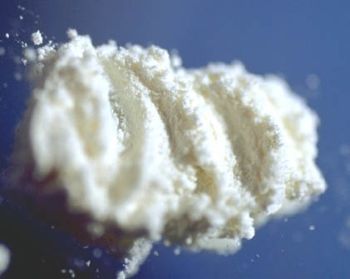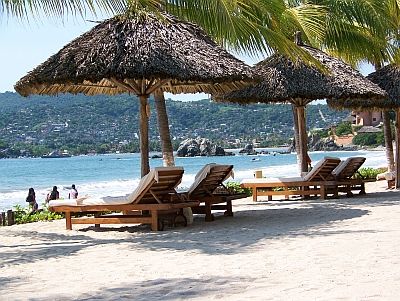
Publisher:
Bonnie King
CONTACT:
Newsroom@Salem-news.com
Advertising:
Adsales@Salem-news.com

~Truth~
~Justice~
~Peace~
TJP
Mar-16-2011 20:42

 TweetFollow @OregonNews
TweetFollow @OregonNews
Health News: Cocaine Kids
Kent Patterson for Salem-News.comOne agency has reached 51,400 people with prevention activities, and directly helped 320 patients and families.
 af11.wordpress.com |
(LAS CRUCES, N.M.) - On a hill overlooking Zihuatanejo, Mexico, Lesly Narvaez Castanon and her staff wage a struggle against substance abuse. Opened in 2005, the government-supported Ixtapa-Zihuatanejo Youth Integration Center(CIJ) became the first drug prevention and treatment center to serve this Pacific Coast resort located in the southern state of Guerrero.
A young psychologist who serves as the director of the CIJ, Narvaez is visibly moved by the tender ages of many patients, including one 12-year-old client, as well as the struggles of others like the pregnant teen who came in for help and then faded away into the shadows of society.
“You don’t know what the future of the baby which she was expecting is going to be,” Narvaez muses. On average, local youth begin using marijuana at ten years of age and then quickly transition to other drugs, Narvaez says. “We give them an average of four to six months before they move on to other substances,” she says.
Recent CIJ studies revealed that while marijuana was Zihuatanejo’s drug of choice in 2009, cocaine was the favorite in 2010. Narvaez says cheap, heavily-cut doses of the stimulant cost little more than five bucks, but the poor product quality results in short highs and intensified desires for more and more dosages.
“Our patients tell us (cocaine) is very easy to get,” the CIJ’s director affirms. “The prices for this substance are very accessible, and so are the sales.” Following cocaine, ecstasy, crack and methamphetamine, in that order, were the most popular drugs identified by the CIJ, Narvaez adds. Zihuatanejo has long been on the coastal route of imported South American cocaine, and once upon a time shipments passed through on their way to the United States or were consumed within tourist circles. Gradually, the stuff leaked out into the community.
 |
According to Narvaez, a 2006-2008 community survey by the CIJ and other local government agencies identified 23,600 people in the 10-19 year-old age range as the segment of the population most vulnerable to substance abuse. She estimates 40 percent of Zihuatanejo’s young people aged 12-19 have tried at least one illegal drug, with the number of substance users in the same age group rising to 70 percent if tobacco and alcohol are thrown into the mix.
Ironically, heroin is not a problem in Zihuatanejo, unlike in cities along the Mexico-US border. Although Guerrero’s Sierra Madres are considered Mexico’s top production zone for growing the opium poppies from which heroin is derived, the local crop is destined for processing and export elsewhere. Narvaez recalls only one patient who walked in with a jones, and he was a person who had acquired the addiction “up north.”
Narvaez warns the local drug abuse problem is moving from the orange zone to the red one, but is quick to add that Zihuatanejo and Guerrero still lag behind the level of illegal drug consumption in places like the northern Mexican border states. According to the last national drug addiction survey sponsored by the Health Secretariat in 2006-2008, Guerrero placed number 20 of the 32 Mexican states examined for the prevalence of drug consumption among people aged 12-65.
“With respect to Zihuatanejo, we still have time to do positive things and create healthy, quality lives for adolescents,” Narvaez contends. Narvaez and other CIJ staff members say different social, economic and cultural factors help explain local drug consumption. And they stress how both alcohol and illicit drug abuse are increasing among women, who are more likely to keep problems behind closed doors and even cut short their treatments.
Once a tight-knit fishing and agricultural village, Zihuatanejo has grown rapidly since the tourist industry was developed in 1972. Nowadays, it is common for both parents to work, with a paternal figure often absent due to migration to the US or elsewhere.
Low-income settlements often lacking basic services now ring the town of about 100,000 people, while countless bars substitute for the lack of other leisure activities and give a social cover to the consumption of mind and mood-altering substances of all kinds.
 |
Sunny beaches and an endless party cycle actively encouraged by the tourism industry make for a “relaxed” atmosphere conducive to both legal and illegal substance use. Children frequently imitate the behavior they observe in adults, CIJ staff members say.
“Curiosity” often triggers a young person’s entrance into the drug subculture, says staff psychologist Mireya Piza, who adds that other familial and affective issues enter into the picture.
“There is little communication with the mother, and in the case of both the mother and the father, there is little emotional attachment,” Piza says.
“Sometimes the mother works, but sometimes she is at home and when there are more children around the mother doesn’t give adequate, quality attention to the child consuming these substances.” Piza, who insists youth substance abuse wasn’t a problem when she grew up, also expresses surprise at the number of adolescent patients she sees these days.
Headquartered in a building and property donated by the Guerrero state government, Narvaez’s modest crew of psychologists and social workers offers pharmaceutical treatment, group and family therapy, smoking cessation clinics, crafts therapy and even hammock-making as a rehabilitative activity. A small gym and a basketball court give clients an opportunity to shed stress, while space is available for meetings of Alcoholics Anonymous.
To counter substance abuse, the CIJ works with schools and other institutions, engages in awareness campaigns and trains health promoters. Narvaez says her agency has reached 51,400 people with prevention activities, and directly helped 320 patients and their family members. Virtually all of the patients have entered on a voluntary basis, with only two hailing from an alternative legal program that refers people to treatment instead of jail, according to the health care specialist. Approximately 50 percent of the patients stay clean, she says.
Although Zihuatanejo’s CIJ does not offer residential treatment, its staff can refer patients to a sister clinic in Acapulco for up to three months. Last year, a second government-supported drug prevention and treatment center, the New Life Center, opened its doors just down the highway from the CIJ.
Founded by Mexico City women’s magazine publisher and philanthropist Kena Moreno in 1969, the CIJ now runs more than 100 centers across the Mexican Republic. According to Narvaez, federal funding of approximately $24,000 annually helps pay for her seven-person staff, while outside financial contributions and material donations are solicited to fill in the gaps. Center staff maintain that more economic support, enhanced public attention and greater personal commitment need to be focused on the substance issue issue.
“It’s a well-known public health problem, but unfortunately in Guerrero we don’t always have adequate public institutions,” Piza says.
“There are two (Zihuatanejo) centers that can give specialized treatment, but at times not having support from the family blocks treatment.”
Despite the obstacles, Narvaez is optimistic about the future. “We need more human resources to focus on this problem, and informational workshops that will allow adolescents to have the ability to say no to a situation,” she says. “We need more follow-up work in the schools to give children all the information that has to do with preventing drug use. But there’s a very receptive response by the population in general.”
Frontera NorteSur: on-line, U.S.-Mexico border news
Center for Latin American and Border Studies
New Mexico State University
Las Cruces, New Mexico
Articles for March 15, 2011 | Articles for March 16, 2011 | Articles for March 17, 2011





Quick Links
DINING
Willamette UniversityGoudy Commons Cafe
Dine on the Queen
Willamette Queen Sternwheeler
MUST SEE SALEM
Oregon Capitol ToursCapitol History Gateway
Willamette River Ride
Willamette Queen Sternwheeler
Historic Home Tours:
Deepwood Museum
The Bush House
Gaiety Hollow Garden
AUCTIONS - APPRAISALS
Auction Masters & AppraisalsCONSTRUCTION SERVICES
Roofing and ContractingSheridan, Ore.
ONLINE SHOPPING
Special Occasion DressesAdvertise with Salem-News
Contact:AdSales@Salem-News.com
Terms of Service | Privacy Policy
All comments and messages are approved by people and self promotional links or unacceptable comments are denied.
[Return to Top]
©2025 Salem-News.com. All opinions expressed in this article are those of the author and do not necessarily reflect those of Salem-News.com.